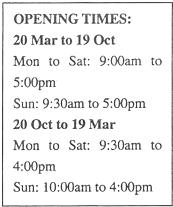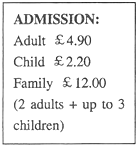题目内容
9.Working with a group of baboons (狒狒) in the Namibian desert,Dr.Alecia Carter of the Department of Zoology,Cambridge University set baboons learning tasks involving a novel food and a familiar food hidden in a box.Some baboons were given the chance to watch another baboon who already knew how to solve the task,while others had to learn for themselves.To work out how brave or anxious the baboons were,Dr.Carter presented them either with a novel food or a threat in the form of a model of a poisonous snake.She found that personality had a major impact on learning.The braver baboons learnt,but the shy ones did not learn the task although they watched the baboon perform the task of finding the novel food just as long as the brave ones did.In effect,despite being made aware of what to do,they were still too shy to do what the experienced baboon did.
The same held true for anxious baboons compared with calm ones.The anxious individuals learnt the task by observing others while those who were relaxed did not,even though they spent more time watching.
This mismatch between collecting social information and using it shows that personality plays a key role in social learning in animals,something that has previously been ignored in studies on how animals learn to do things.The findings are significant because they suggest that animals may perform poorly in cognitive (认知的) tasks not because they aren't clever enough to solve them,but because they are too shy or nervous to use the social information.
The findings may impact how we understand the formation of culture in societies through social learning.If some individuals are unable to get information from others because they don't associate with the knowledgeable individuals,or they are too shy to use the information once they have it,information may not travel between all group members,preventing the formation of a culture based on social learning.
59.What is the first paragraph mainly about?A
A.The design of Dr.Carter's research.
B.The results of Dr.Carter's research.
C.The purpose of Dr.Carter's research.
D.The significance of Dr.Carter's research.
60.According to the research,which baboons are more likely to complete a new learning task?D
A.Those that have more experience.
B.Those that can avoid potential risks.
C.Those that like to work independently.
D.Those that feel anxious about learning.
61.Which best illustrates the"mismatch"mentioned in Paragraph 4?C
A.Some baboons are intelligent but slow in learning.
B.Some baboons are shy but active in social activities.
C.Some baboons observe others but don't follow them.
D.Some baboons perform new tasks but don't concentrate.
62.Dr.Carter's findings indicate that our culture might be formed throughB.
A.storing information
B.learning from each other
C.understanding different people
D.travelling between social groups.
分析 这是一篇夹叙夹议的议论文.文章通过阐述研究狒狒如何获得食物的信息来讲述社会生活中的文化是通过相互的学习来获取的.
解答 59.A 段落大意题.根据第一段中的"Dr Alecia Carter of the Department of Zoology,Cambridge University set baboons learning tasks involving a novel food and afamiliar food hidden in a box.Some baboons were given the chance to watchanother baboon who already knew how to solve the task,while others had tolearn for themselves."可知本段主要描述他进行的这项研究的设计方案,也就是他在这项研究里是如何做的.故A正确.
60.D 细节理解题.根据第三段第二句"The anxious individuals learnt the task byobserving others while those who were relaxed did not,even though they spentmore time watching."可知那些很焦虑的、急切想学习的狒狒学得更快、更好.故D正确.
61.C 推理判断题.根据第二、三段可知一些狒狒虽然观察了很长时间,但是并没有采取行动.这种搭配不当说明性格在动物的社会行为中起着很重要的作用.第四段里的mismatch就是指第三段最后一句"while those who were relaxed did not,even thoughthey spent more time watching."的内容.故C正确.
62.B 推理判断题.根据文章最后一段第一句"The findings may impact how we understand theformation of culture in societies through social learning."可知人们是通过社会学习来理解我们的文化的组成的,也就是说人们需要相互交换信息、相互学习.故B正确.
点评 解答细节理解题时,一个常用的方法就是运用定位法,即根据题干和选项中的关键词从原文中找到相关的句子,与选项进行比较从而确定答案;推理判断题既要求学生透过文章表面文字信息推测文章隐含意思,又要求学生对作者的态度、意图及文章细节的发展作正确的推理判断,力求从作者的角度去考虑,不要固守自己的看法或观点.

 阅读快车系列答案
阅读快车系列答案Sibson rushed down the stairs barefoot to(23)check;his two-story wooden house.Then he heard the smoke alarm beeping.Sibson rushed down the stairs barefoot to(24)explodedout.Sibson ran back upstairs to call 911 from his bedroom."I felt(25)safebecause the room had a separate outdoor stairway,"he explains.
But the phone didn't work,and when he tried to go down the outdoor stairway,he was(26)stoppedby a wall of flames.Sibson realized he was trapped(困住).
Sibson's house was three kilometers(27)off Sibson's house was three kilometers(28)fruitless.
Up a hill nearby lived Sibson's neighbor,Huggons.He was lying in bed when something like a smoke alarm(29)struckUp a hill nearby lived Sibson's neighbor,Huggons.He was lying in bed when something like a smoke alarm(30)phoneand flashlight,and headed down the hillside toward the (31)noise.Huggons dialed 911,and the operator warned him not to(32)enterBut Huggons said,"There is no way I am going to listen to Sibson(33)screamand die in that fire."
"Anyone there?"Huggons called out.Then he heard"Help!I'm trapped!"coming from the second floor balcony(阳台).He entered the house,but soon had to run back to catch his(34)breath.
After one more(35)attemptinside the house,Huggons gave up and(36)around back.
The wind parted the smoke just (37)enoughfor him to catch sight of Sibson.But there was no way to get to him.He(38)shonethe flashlight into the woods and noticed a ladder.He took it over to the balcony and(39)pulledSibson down just as the second floor of the house fell off.
Sibson is still(40)thankfulwhen he tells the story."I was alone that night,"he says."Then I heard the most beautiful sound in my life.It was Huggons."
| 21.A.before | B.while | C.since | D.until |
| 22.A.on | B.in | C.through | D.over |
| 23.A.hide | B.wait | C.check | D.escape |
| 24.A.moved | B.gave | C.went | D.exploded |
| 25.A.safe | B.worried | C.glad | D.tired |
| 26.A.burned | B.stopped | C.shocked | D.covered |
| 27.A.beside | B.off | C.across | D.along |
| 28.A.limited | B.false | C.fruitless | D.regretful |
| 29.A.struck | B.missed | C.touched | D.passed |
| 30.A.coat | B.key | C.basin | D.phone |
| 31.A.noise | B.road | C.smoke | D.danger |
| 32.A.search | B.enter | C.leave | D.damage |
| 33.A.call | B.roll | C.scream | D.sigh |
| 34.A.breath | B.attention | C.ladder | D.flashlight |
| 35.A.stay | B.chance | C.thought | D.attempt |
| 36.A.climbed | B.circled | C.looked | D.jumped |
| 37.A.clear | B.open | C.enough | D.fit |
| 38.A.led | B.put | C.drove | D.shone |
| 39.A.persuaded | B.kicked | C.pulled | D.forced |
| 40.A.nervous | B.surprised | C.proud | D.thankful |
| A. | concept | B. | responsibility | C. | identity | D. | personality |
| A. | preserved | B. | protected | C. | spread | D. | developed |
| A. | cheapest | B. | most expensive | C. | cheaper | D. | more expensive |
-Oh,dear!I forgot.( )
| A. | Will you buy | B. | Did you buy | C. | Have you bought | D. | Would you buy? |
 Head of Research
Head of Research
 The Birthplace is within easy walking distance of all the car parks shown on the map; nearest is Windsor Street(3minutes'Walk).
The Birthplace is within easy walking distance of all the car parks shown on the map; nearest is Windsor Street(3minutes'Walk).